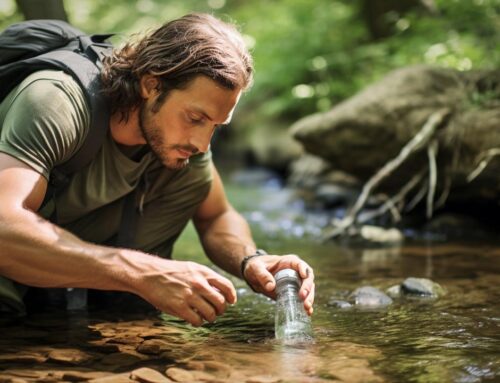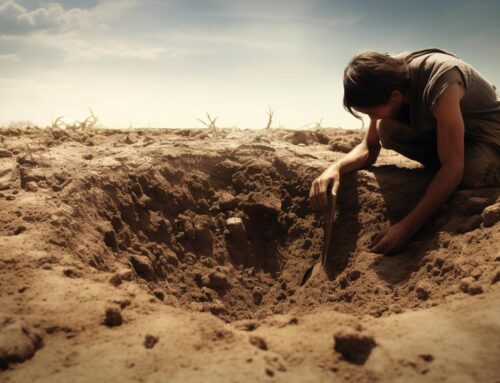Water is life – it’s as simple and as complex as that. In the wild, where the trappings of civilization fade and you’re left to the mercy of nature, water becomes not just a basic need but a lifeline. The aim of this article is to journey through the essentials of water purification in the wild, an absolute must-know skill for any survivalist, hiker, or outdoor enthusiast.
We’ll explore the various methods to purify water found in nature, from the rudimentary to the more sophisticated, and delve into the science behind each technique. Additionally, we’ll discuss the importance of understanding water sources, the risks of contaminated water, and how to assess the best method for purification based on your specific circumstances. This isn’t just an article; it’s a comprehensive guide that could one day save your life or someone else’s.
Survivalist’s Guide to Water Purification in the Wild
Table of Contents
- Understanding Water Sources
- Water Purification Methods
- Choosing the Right Purification Method
- Making Water Potable
- Precautions and Tips
- Frequently Asked Questions
- Final Thoughts
- Sources
Understanding Water Sources
When you’re out in the open, away from the bustle of urban life, finding a water source is step one in the survival playbook. But it’s not as simple as just finding a stream and taking a gulp. You’ve got to understand what you’re dealing with, and that means getting to know the types of water sources you might encounter and the potential risks each carries.
Natural Water Sources
Out in the wild, you’ll come across various natural water sources such as streams, rivers, lakes, springs, and even rainwater collections. Each source has its unique ecosystem and potential contaminants. For instance, stagnant water found in ponds or lakes is prone to hosting a variety of pathogens and parasites, while fast-flowing streams may seem pristine but can be tainted with runoff from upstream.
Identifying Contaminants
The dangers lurking in untreated water can range from viruses and bacteria, like E.coli and Giardia, to chemical pollutants from agricultural runoff. Natural water can also contain heavy metals like lead or mercury, particularly in regions with mining activities. Spotting these contaminants isn’t always possible with the naked eye, so assume all untreated water is unsafe until purified.

Water Purification Methods
When you’re miles away from the nearest faucet, purifying natural water becomes a necessary skill. There’s a variety of ways to turn murky, suspect water into a lifeline. Let’s break down the most common and effective methods used to purify water in the wild.
Boiling
Boiling is the old reliable of water purification. It’s simple: bring water to a rolling boil for at least one minute, and you’ve killed most pathogens. At higher altitudes, where the boiling point of water drops due to reduced atmospheric pressure, extend the boiling time to three minutes.
Chemical Treatments
Chemical treatments, such as iodine or chlorine tablets, are lightweight and convenient. They’re added to water and require a specific amount of contact time to neutralize viruses, bacteria, and protozoa. However, they may leave an aftertaste and are ineffective against some contaminants like Cryptosporidium.
Filtration Systems
Filtration systems range from straw filters to pump-operated units. These devices physically remove pathogens and, depending on the pore size, even some chemicals and heavy metals. They’re effective and efficient but can be bulky and require maintenance like backwashing or filter replacement.
UV Light Purification
UV light purification involves using a handheld device that emits UV light to disrupt the DNA of microorganisms, rendering them harmless. It’s a quick, chemical-free way to purify water, provided that the water is clear enough for the light to penetrate effectively.
Solar Water Disinfection
Solar water disinfection (SODIS) is a low-tech method where water is filled in transparent plastic bottles and exposed to the sun for a significant amount of time. UV radiation and heat from the sun work together to kill pathogens. This method is simple but requires a sunny day and several hours to be effective.
Choosing the Right Purification Method
The wilderness demands versatility and adaptability, especially when it comes to making water safe to drink. With a range of purification methods at your disposal, the key is to choose the one that best suits your current situation. Let’s explore how to make that choice wisely.
Situation Assessment
Before you purify, assess your situation. How much water do you need? What’s the quality of the water source? Are you stationary or on the move? If you’re in a temporary camp near a clear mountain stream, boiling water might be your best bet. On the other hand, if you’re on the go and need to drink from various sources, a portable filter or UV light purifier would be more practical.
Resource Availability
Your choice also depends on what you have with you. If you’re carrying iodine tablets or a filtration straw, you’re prepared for on-the-spot purification. For those who prefer not to carry extra gear, knowledge of techniques like SODIS can be invaluable. It’s also essential to consider the wait time; chemical treatments and SODIS require several hours to be effective, whereas boiling and UV treatment provide immediate results.
Environmental Considerations
The environment itself can dictate your choice. In sunny, open areas, SODIS is a viable option, but in overcast conditions or at night, you’ll need an alternative. Similarly, in cold environments, boiling may be more energy-intensive, making chemical treatments more appealing.
Making Water Potable
Transforming questionable water into a drinkable state isn’t just about neutralizing the unseen threats; it’s about understanding and applying the right techniques with whatever resources you have at hand. Here’s how you can make water potable in the wild.
DIY Purification Techniques
If you find yourself without any commercial purification tools, don’t fret. Nature and a bit of ingenuity can be your allies. Sand, gravel, charcoal, and cloth can be used to create a rudimentary filter that removes large particulates and some contaminants. Following this with boiling or solar disinfection can further improve safety.
Natural Indicators of Clean Water
Sometimes, nature gives hints about water quality. Fast-moving water in streams is typically cleaner than stagnant water in ponds. Areas with abundant plant life can also indicate healthier ecosystems, which can positively impact water quality. However, these are not foolproof indicators, and water should always be treated before consumption.
Pre-filtering Techniques
When dealing with turbid or muddy water, pre-filtering is a must. Letting the water settle and then using a cloth or a piece of clothing to strain out debris can greatly improve the effectiveness of boiling or chemical treatments. Pre-filtering is especially important for filters and UV purifiers, as clarity is crucial for their operation.
Precautions and Tips
While securing potable water in the wilderness is crucial, it’s equally important to approach the process with caution. Here are some key precautions and practical tips to ensure your safety and success in purifying water in the wild.

Staying Safe While Gathering Water
Always be aware of your surroundings when collecting water. Keep an eye out for wildlife, as water sources are natural gathering spots for animals. Also, make sure to gather water upstream from any human activity to minimize the risk of contamination from pollutants or pathogens.
Avoiding Common Mistakes
One common mistake is assuming that clear water is safe water. Looks can be deceiving; pathogens and chemicals are not always visible. Another error is not allowing enough time for chemical purifiers to work or not using them correctly according to the instructions, which can leave harmful organisms alive in the water.
Safe Storage
After purifying, keep the water safe by storing it in clean containers. Avoid cross-contamination by using separate containers for untreated and treated water, and never dip dirty hands or objects into your potable water supply.
Maintenance of Purification Tools
For those using filters or UV purifiers, regular maintenance is essential. Clean and service your equipment according to the manufacturer’s guidelines to ensure it remains effective and doesn’t become a source of contamination itself.
Conserving Resources
Be mindful of your resources. If you’re using a method like boiling, conserve fuel by only boiling as much water as you need, and consider insulating the pot to reduce boil time. With chemical treatments, measure carefully to avoid wasting these precious supplies.
Frequently Asked Questions
Final Thoughts
As we wrap up our guide, the most critical takeaway is the importance of preparedness and knowledge. Understanding how to purify water is not just about survival; it’s about maintaining health and ensuring longevity in the wild. Each method has its place, and no one size fits all. It’s crucial to evaluate your environment, assess your needs, and choose the most effective purification technique accordingly. Remember, the best survival tool is your mind, and with the information from this guide, it’s now sharpened to tackle one of nature’s most fundamental challenges: finding clean, drinkable water.
Sources
The information in this article is drawn from a range of expert sources, including survivalist manuals, outdoor adventure guides, and scientific research on water purification. Direct citations are not provided here, but the knowledge compiled is a reflection of widespread practices and information vetted by professionals in wilderness survival and water treatment. For further reading and detailed technical insights, readers are encouraged to consult materials from outdoor survival courses, publications by environmental health agencies, and textbooks on environmental science and microbiology






Leave A Comment